The Vicious Crashes and Terrifying Records of Peak Downforce
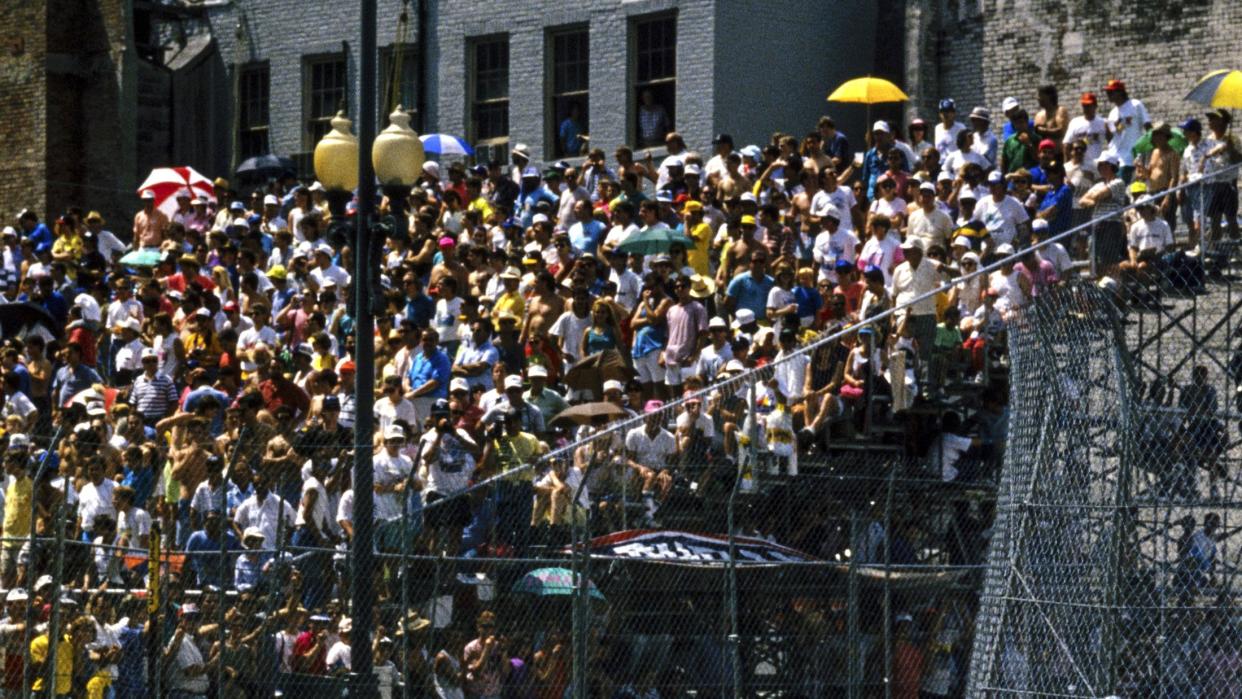
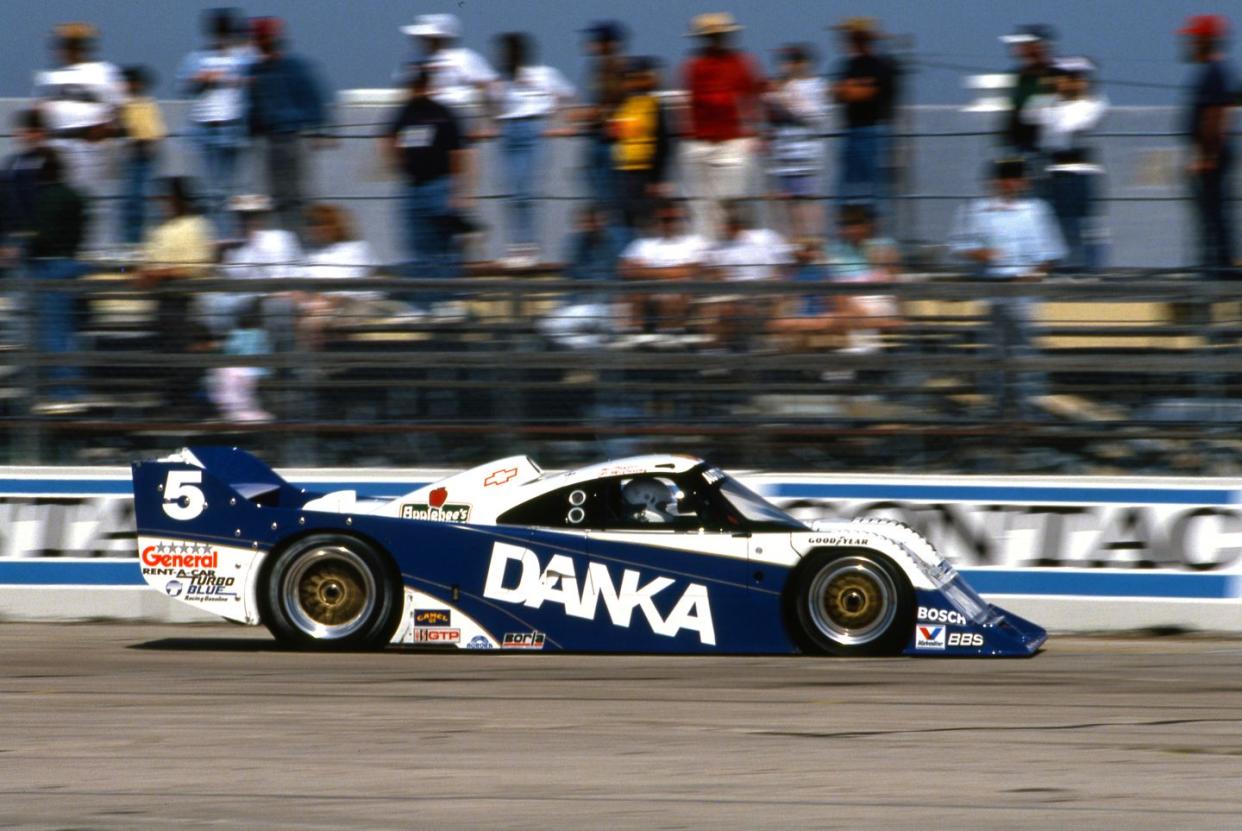
“Downforce is a mind fuck,” says Tommy Kendall. He would know. “Everything you’d experienced before says, ‘You can’t do this. You can’t go faster.’”
Nearing 60, Kendall walks with a pronounced limp, each step a painful reminder of the awesome risks that accompanied the weaponized airflow of Grand Touring Prototype (GTP) racing.
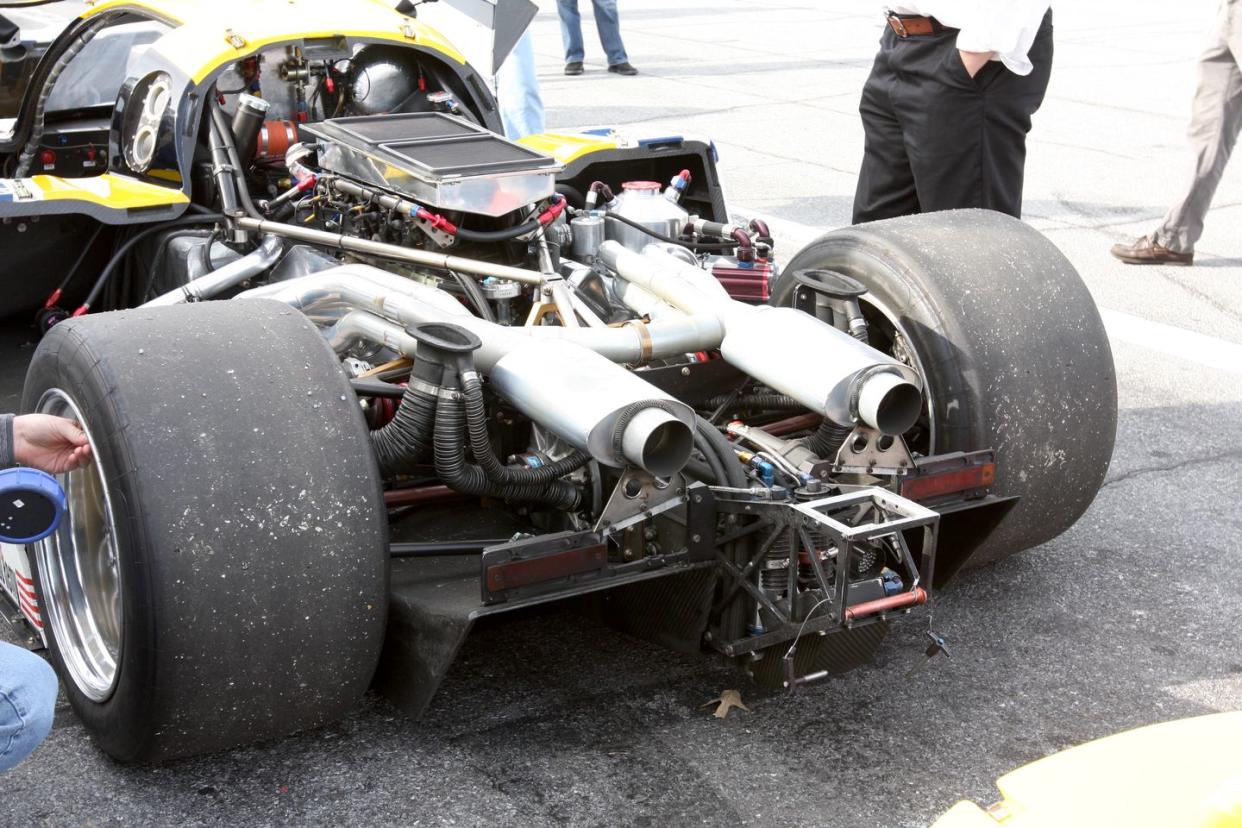
The lanky Californian terrorized American racetracks in the early Nineties driving IMSA’s most extreme machinery. His efforts netted lap records at multiple circuits, but Kendall paid a price for the experience.
Nine hours of emergency surgery was the cost after Kendall was cut from his crumpled Chevrolet Intrepid RM-1 in 1991. Surgeons did their best to reassemble his shattered legs and pulverized feet after the crushing weight of downforce—like an invisible elephant perched atop the roof—snapped the rear suspension and launched the Intrepid into the barriers at Watkins Glen International’s Turn 5 at about 150 mph. But flirting with calamity was part of the job.
Outrageous budgets committed to GTP by General Motors, Jaguar, Nissan, and Toyota delivered unhinged horsepower and downforce figures for three glorious seasons. But as Kendall and others found, when you bend the laws of physics, sometimes physics fights back.
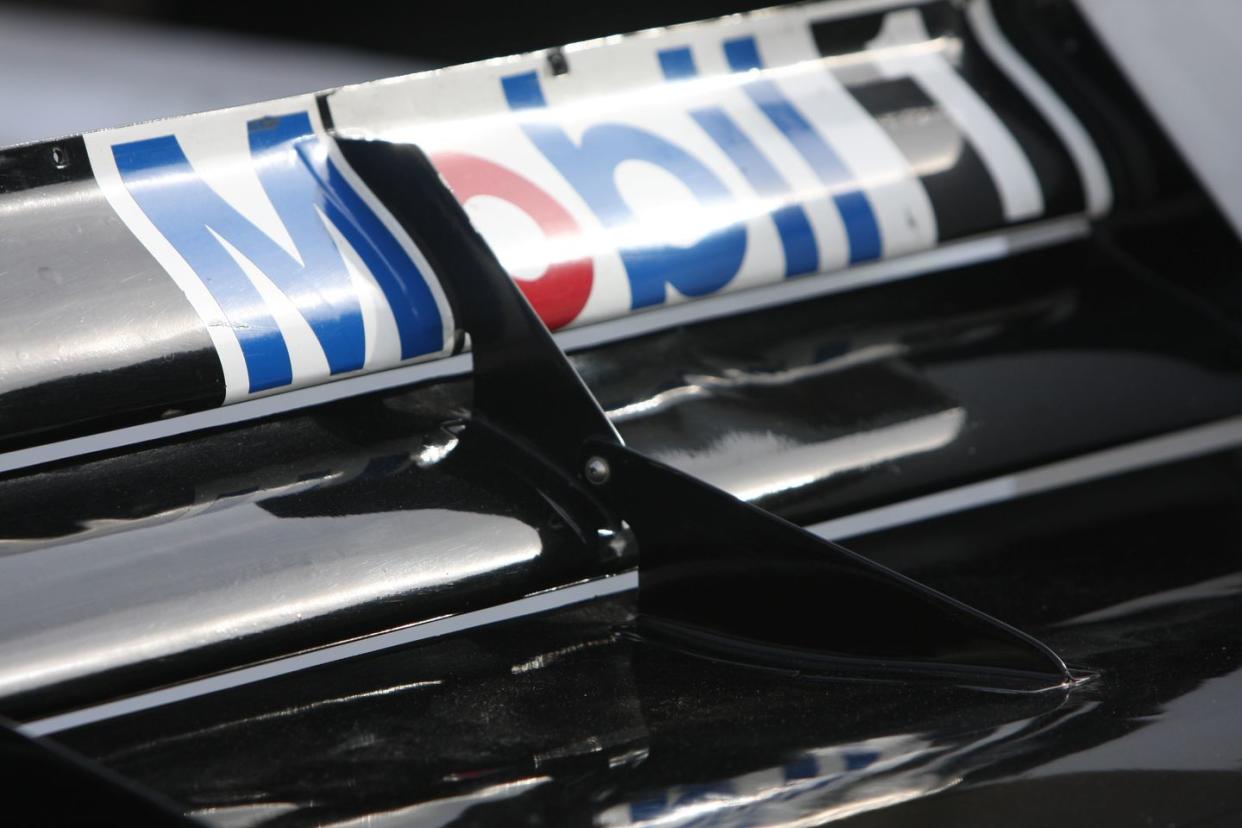
In a rolling tale by GTP drivers, engineers, and officials who survived the era, Road & Track explores the rise and fall of IMSA’s downforce kings from the early Nineties.
Davy Jones, Tom Walkinshaw Racing (TWR) Jaguar XJR-14 driver: When I first drove the Jaguar XJR-14 at a test in Phoenix, I couldn’t hold my head up.
David Brabham, TWR Jaguar XJR-14 driver: The g-forces were pretty high. With full wing, it was like 10,000 pounds of downforce.
Davy Jones: We had to modify all kinds of head braces and shoulder straps just so I could drive the thing.
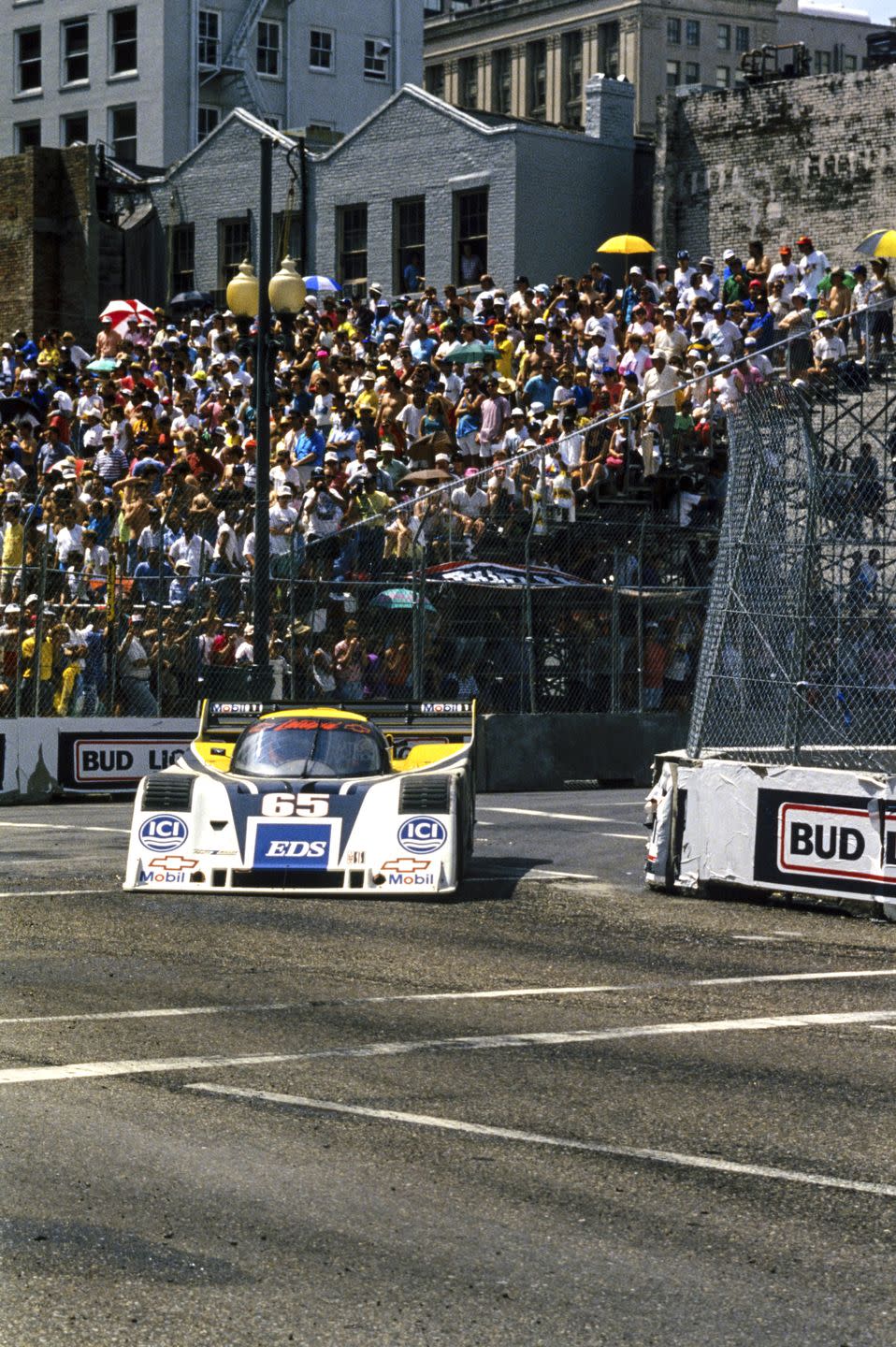
PJ Jones, Toyota All American Racers (AAR) Eagle Mk III driver: It was like 4 Gs under braking. At most tracks, we braked at the 1 marker. Your whole body got mushed into the seatbelts. It just pushed the wind out of you. I haven’t driven anything like it since, even Indy cars.
Mark Raffauf, IMSA technical chief: Tommy Kendall once told me if you didn’t get out of the Intrepid after driving it and feel sick, you weren’t driving it hard enough. That’s how brutal it was.
Trevor Harris, chassis designer, Nissan Performance Technology Inc. (NPTI): It wasn’t by accident. We were trying to get ever more downforce. The chassis was to follow whatever the aerodynamics wanted.
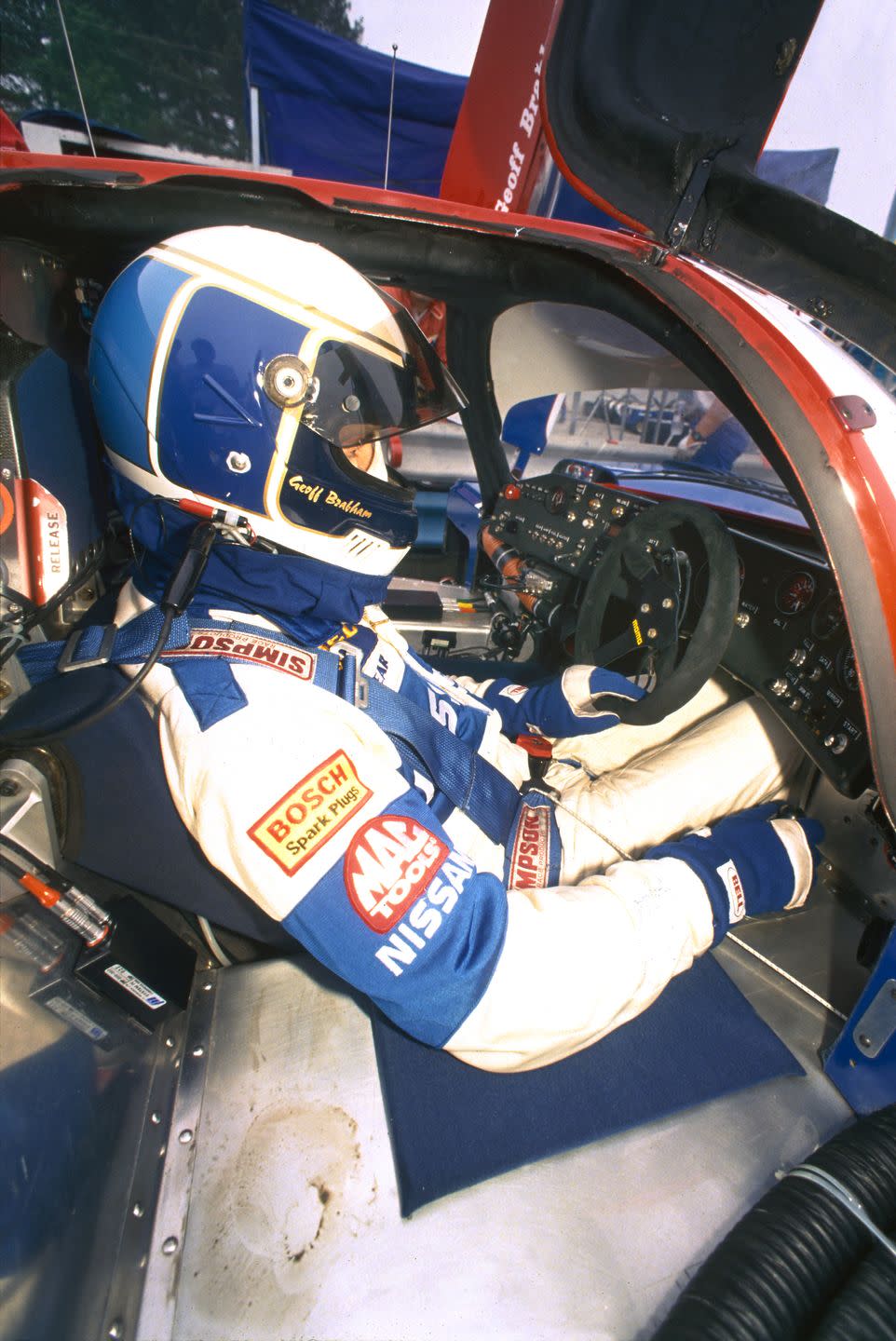
The revolutionary era didn’t come about by chance; it was the result of a series of innovations and a mounting quest for more speed. In 1981, GTP cars put hand-built low-slung prototypes in the spotlight. They looked spectacular and drove IMSA’s popularity to new heights.
By the mid-Eighties, turbocharging pushed GTP horsepower into four digits, but the explosive acceleration wasn’t matched with aerodynamic help. GTP cars were relatively light at around 2000 pounds, with maximum downforce figures in the range of 2500 to 3000 pounds at 200 mph. At most tracks, the GTPs behaved more like dragsters, unable to carry speed through the turns.
Geoff Brabham, four-time GTP champion from 1988 to 1991 with Nissan: When I first drove the GTP ZX-Turbo in 1986, we had 1100 hp. But you could hardly drive it.
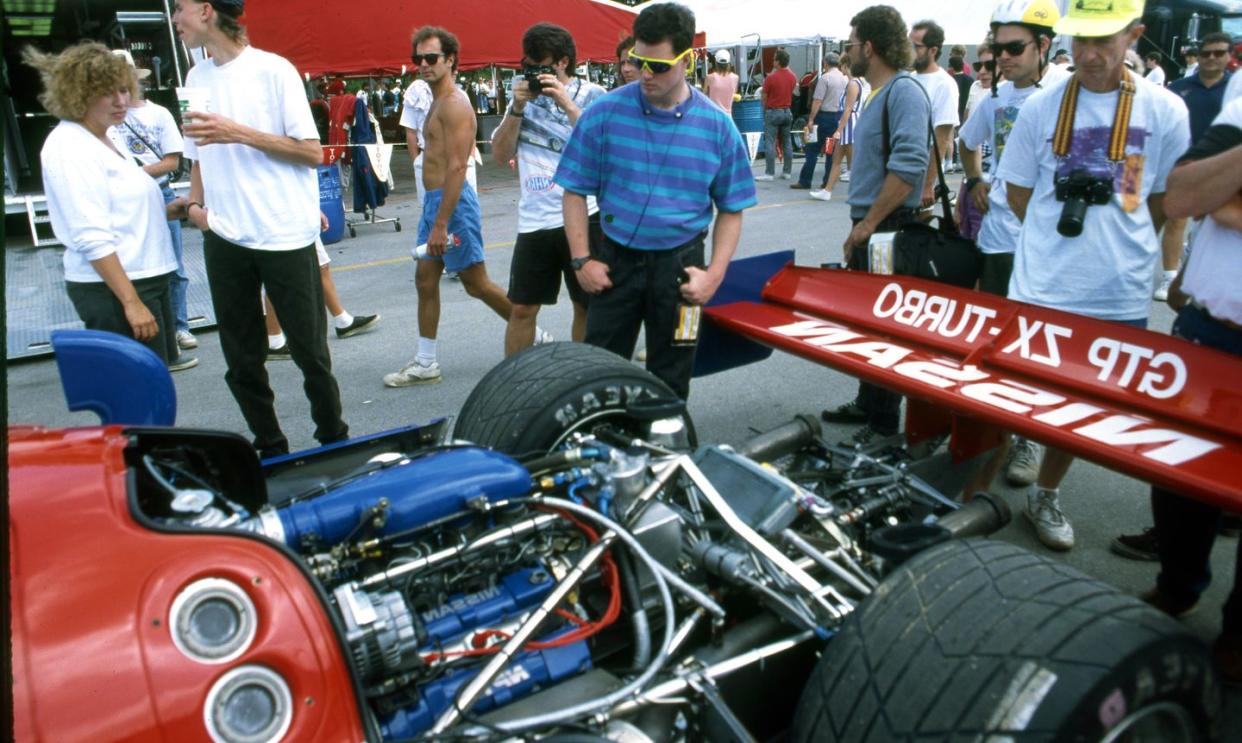
This was GTP’s biggest issue. Designers spent the rest of the Eighties looking for downforce that delivered cornering performance to match the straight-line power.
As the Nineties approached, peak downforce rose steadily: 3000, 5000, then 7000 pounds. Simultaneously, cars like the GTP ZX-Turbo were fast becoming antiquated; their sleek bodywork minimized drag. To go faster, that design philosophy would need to be upended.
Bill Riley, co-creator of the Chevy Intrepid with his father, Bob: Engine power started to make it possible to pile on the downforce. We had the power to pull through the drag. That’s where it really started.
GTPs made downforce in the nose, splitter, underwing, diffuser, and rear wing. The underwing is where GTP designers focused their attention and made mind-boggling gains with ground effects.
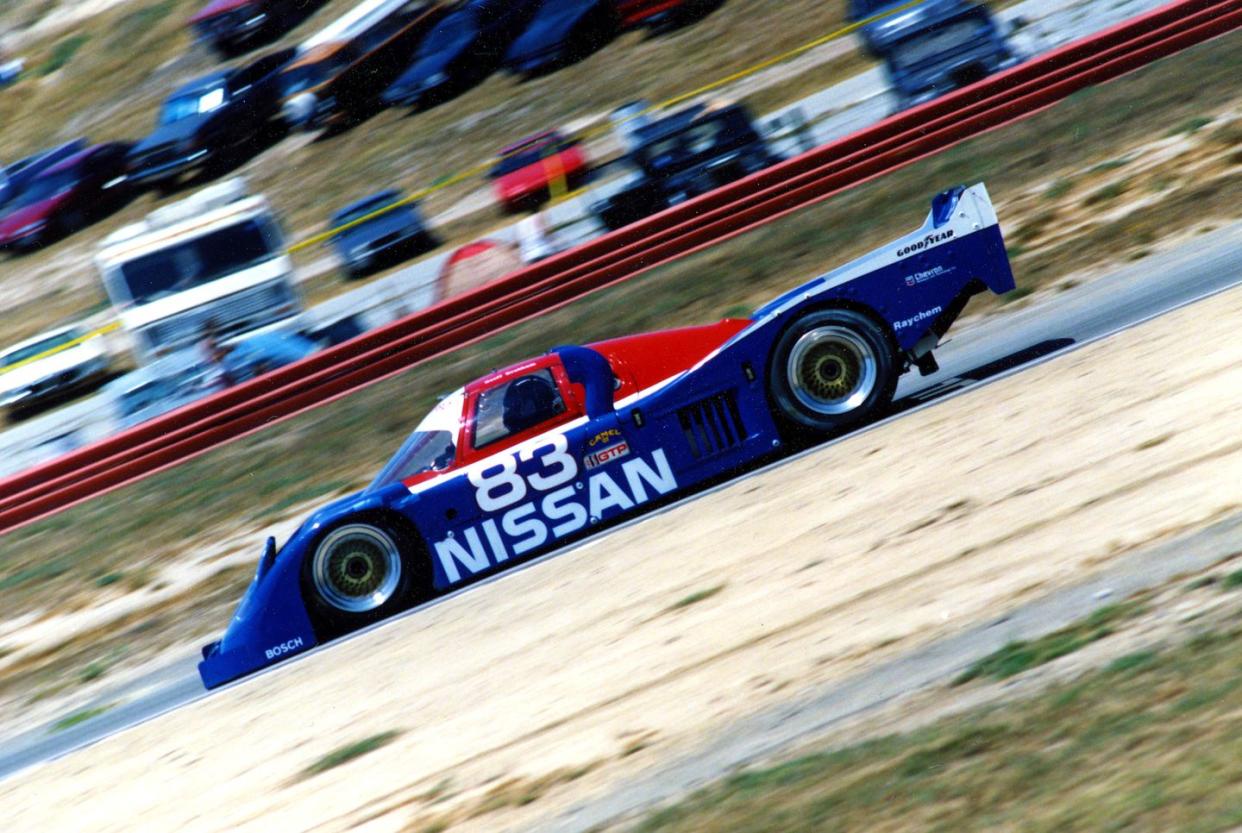
Raffauf: The side pods had inverted wings, and the undersides were contoured like upswept tunnels. You’ve got to get the air under the car to create an upside-down airfoil. The tunnels made the whole car a wing.
John Ward, designer of AAR’s Eagle Mk III: Ground effects, used properly, are the most effective way to make downforce.
Raffauf: The concept wasn’t new, but applying it to a full-size car opened a lot of opportunity to explore. The rules back then were the opposite of what they are now. Unless it said you couldn’t do it, you could.
Trevor Harris and NPTI aerodynamicist Yoshi Suzuka are credited as the fathers of GTP’s maximum-downforce breakthrough. Their Nissan NPT-90, conceived and built in Southern California, was a hulking statement of intent whose enlarged underwing generated hellacious suction.
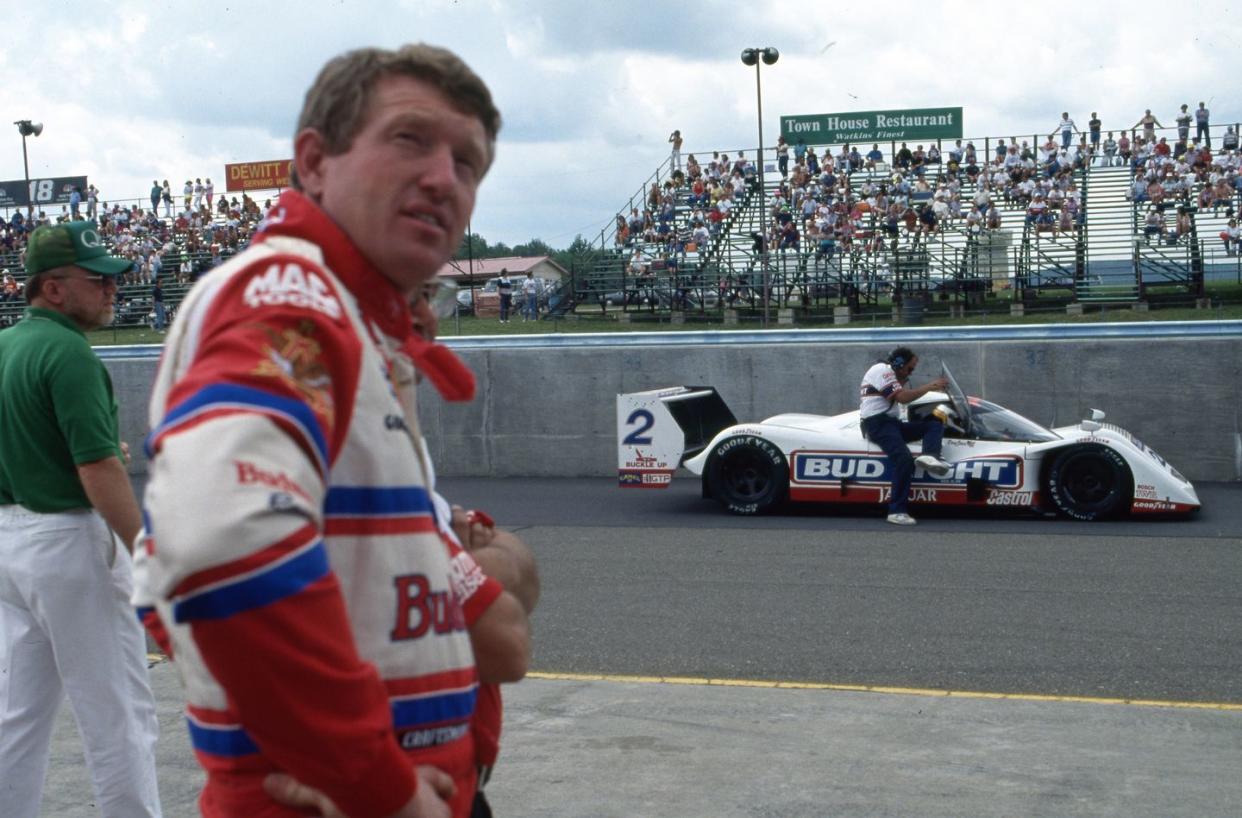
Geoff Brabham: And we ran a huge rear wing on the back. It was like a barn door.
It worked. Nissan clinched the 1990 and 1991 championships with the first model to produce 8000 pounds of downforce.
The NPT-90 was IMSA’s first drag-be-damned GTP car. But the Riley family reset the bar with the Intrepid they drew for GM-factory affiliate Pratt & Miller Engineering. Among IMSA’s downforce monsters, the Intrepid was King Kong.
Riley: It had 10,000 pounds of downforce.
With 800 hp and gobs of torque from its naturally aspirated Chevy V-8, the Intrepid’s argumentative visuals—a symphony of vertical battering surfaces—articulated GTP’s bold new direction.
Kendall: It just strikes you as a blunt instrument. Once Bob Riley made the decision that the downforce was worth it, he went all in.
Compared with the NPT-90, the Intrepid’s nose was steeper; everything that could produce downforce was dialed up to cartoonish levels, including the voluminous underwing and its giant ground-effect tunnels.
Riley: A lot of dogs could have lived beneath those tunnels.
The Intrepid’s maiden track test was a revelation.
Riley: Tommy radioed and said, “I have a flat. I’m just gonna stop on track because I don’t want to hurt anything.” So we went out there, and the cords were sticking out of the sidewalls! Like, it burst the sidewalls of the tires. The Goodyear engineer said, “We’ve never seen that before.” We were blowing sidewalls out of the tires that everybody else was using.
Goodyear had to start making stronger tires because of the Intrepid.
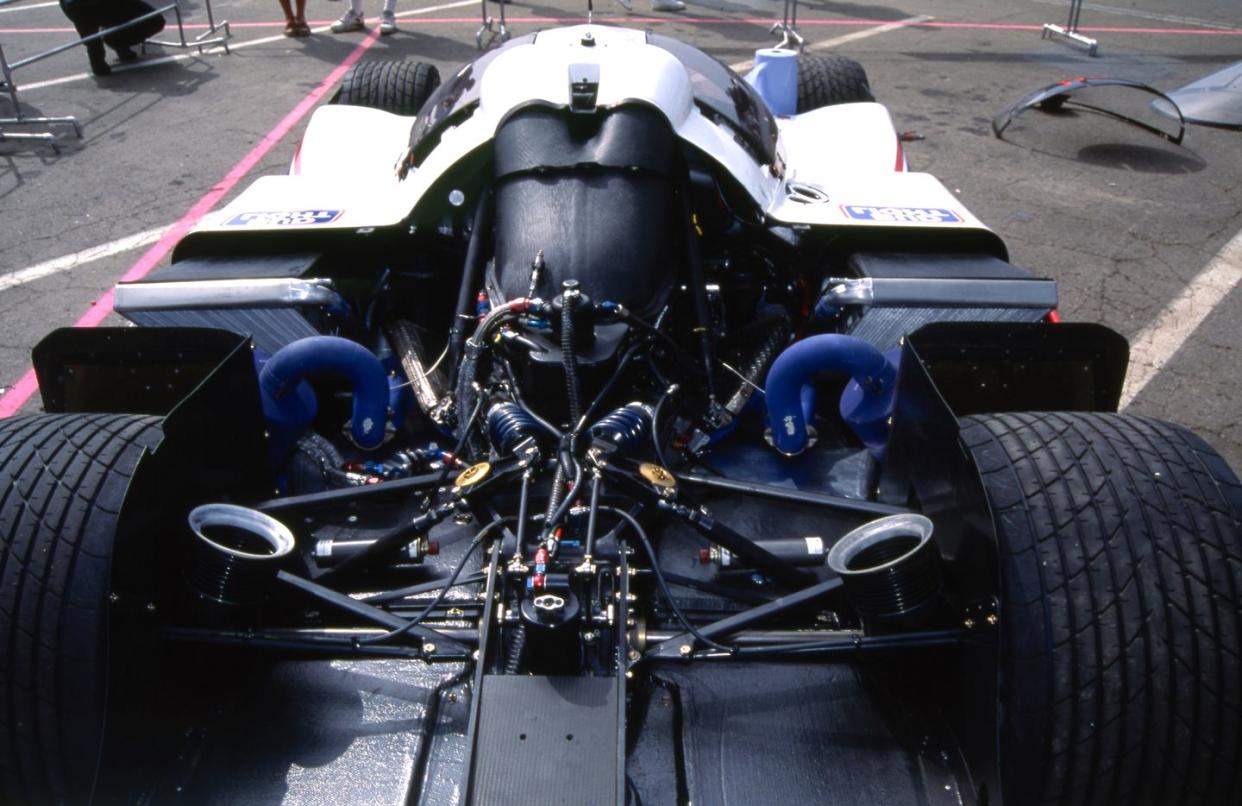
Kendall: People laughed at the Intrepid early on, thinking we’d gone overboard on downforce. Watkins Glen was a good example. Bernd Schneider was on pole in a Porsche 962, and he was 34 mph faster through the traps than me. Schneider did 212, and I was 178. We were hardly accelerating on the straightaway.
Despite the massive top-speed disparity, the Intrepid’s peerless cornering put it third on the grid, just 0.242 second shy of Schneider’s streamliner.
Riley: The Intrepid didn’t have the power the turbo cars had, but we had so much more downforce, it could make up the lap time.
In 1991, the Intrepid recorded six poles from 13 races. No IMSA track was a better incubator of GTP’s evolving downforce and resultant warp speeds than Connecticut’s tiny 1.5-mile bullring, Lime Rock Park.
All American Racers’ Drake Olson was the quickest qualifier at the 1990 Lime Rock race in his Eagle HF-89 Mk II with a lap of 48.701 seconds.
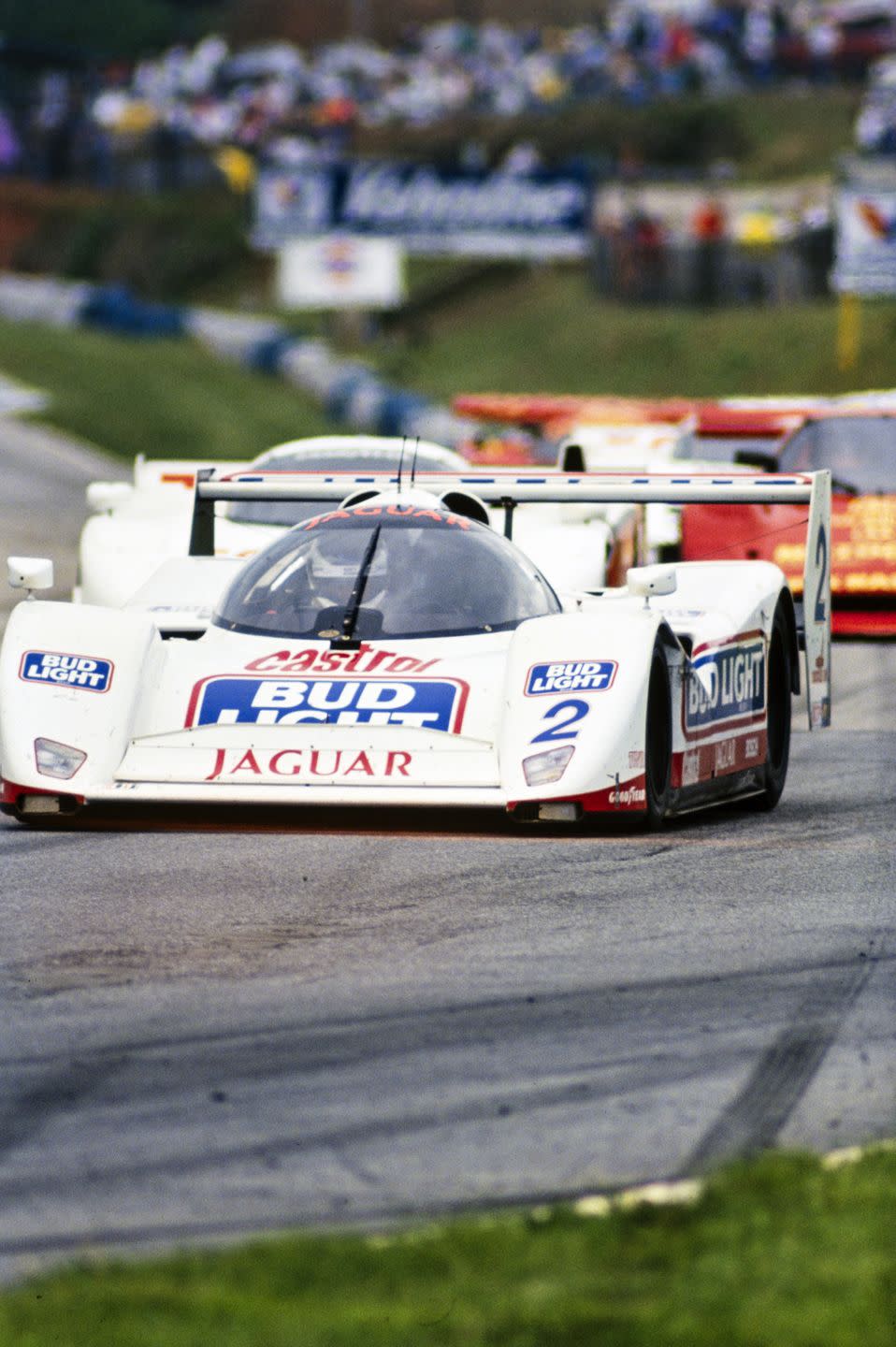
Kendall: Our lap was 44.647 seconds.
On his debut with the Intrepid in 1991, Kendall knocked 4.054 seconds off of Olson’s year-old standard.
Kendall: That qualifying run at Lime Rock is one of the absolute highlights of my life. Probably the most extreme lap I’ve done. I remember leaving the track and thinking, “There’s never been a bag of skin and bones that’s gone around Lime Rock faster.”
Unbeknownst to Kendall and the Intrepid team, new monsters lurked.
Late in the 1991 championship, Dan Gurney’s AAR team drove five hours north from its home in Santa Ana, California, and unloaded its new, untested Eagle Mk III at Laguna Seca. In qualifying, Juan Manuel Fangio II took second, just 0.295 second behind the Intrepid.
In 1992, with a full season of learning and optimization applied to the Mk III, Fangio’s teammate PJ Jones obliterated the Intrepid’s track record by 3.634 seconds.
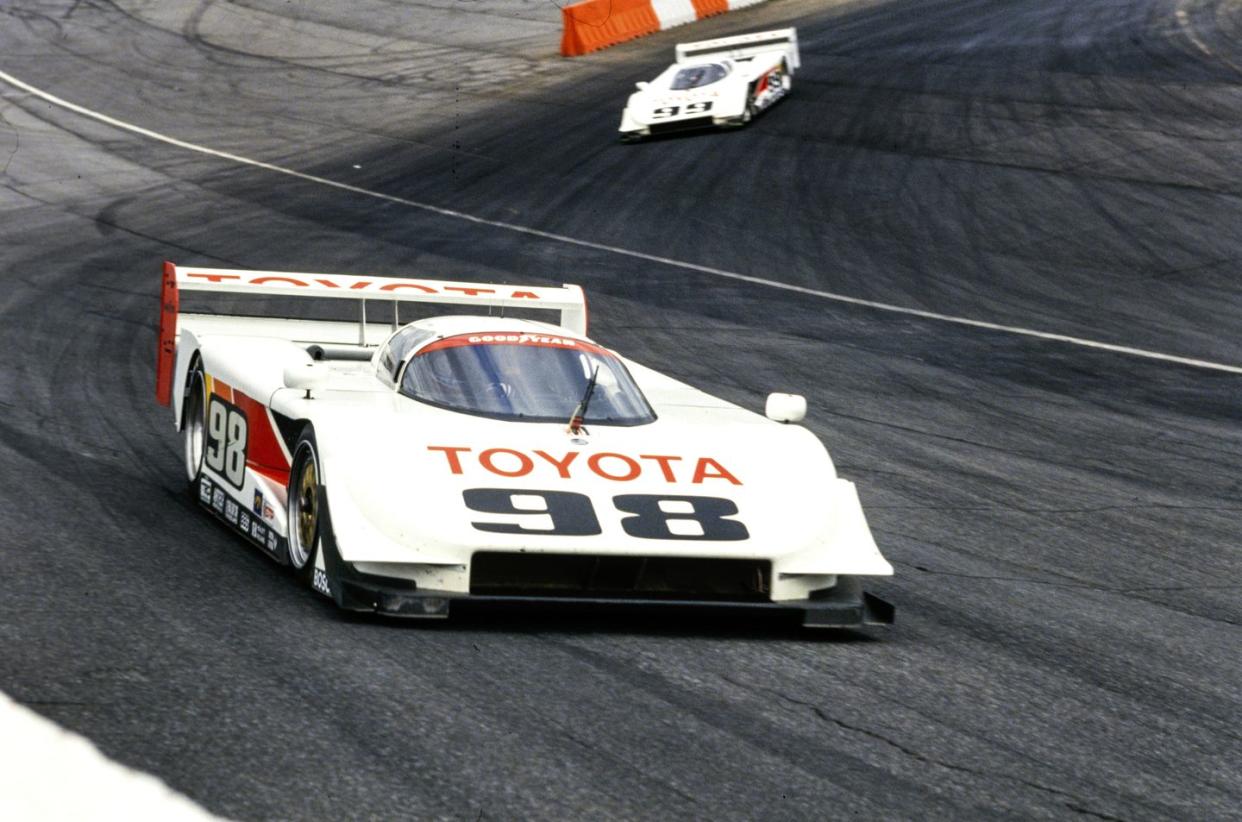
PJ Jones: The more physical I got with the car, the more I was gonna drive it deeper and get back on the gas sooner. Every time, it reacted on the stopwatch. I thought, “God, how much more can I go?”
The Mk III shared many features that made the Intrepid dominant: around 800 hp from the smallest engine in GTP, an angry turbocharged 2.1-liter four-cylinder from Toyota; giant ground-effect tunnels; and...
Ward: The rear wing would fly a small airplane. Big wing, full width, 80 inches.
But that’s not what made this Eagle the most devastating car in GTP history. Its designer, new to sports cars after a career spent with Indy cars, targeted an issue drivers of the rear-heavy prototypes struggled with for years.
Ward: They couldn’t get the front tires to come alive. We had to make more front downforce.
In 1980, during his first of many stints with AAR, Ward had visited a Can-Am race where a novel concept for air extraction on Al Unser’s Frisbee chassis made a lasting impression.
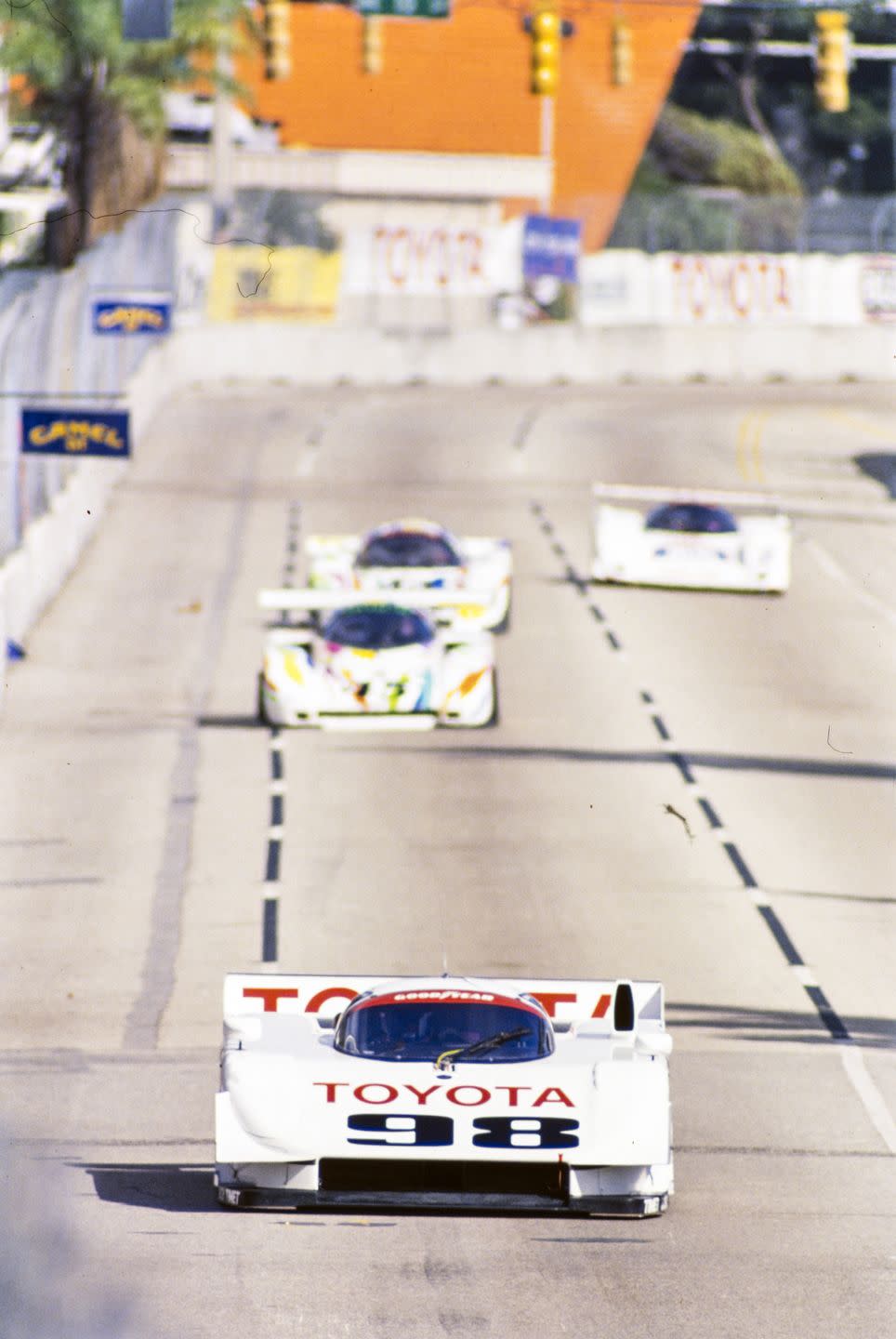
Ward: He just killed them. What stood out was how they made front downforce: The air came underneath the nose of the car and got evacuated behind the front tires. When I went back to AAR in ’89, I had that in mind.
The front section of a GTP chassis, the “tub,” was wide and rectangular, and it filled most of the inner space next to the wheels. Ward knew this design stifled GTP cars’ internal aerodynamics.
His breakthrough? Sculpting and narrowing the Mk III chassis ahead of the cockpit in the vein of an Indy-car tub.
Created in concert with AAR aerodynamicist Hiro Fujimori, channels carved into the car’s flanks behind the front tires rocketed newly liberated air around the sides of the Eagle Mk III. Staggering lap-time gains ensued.
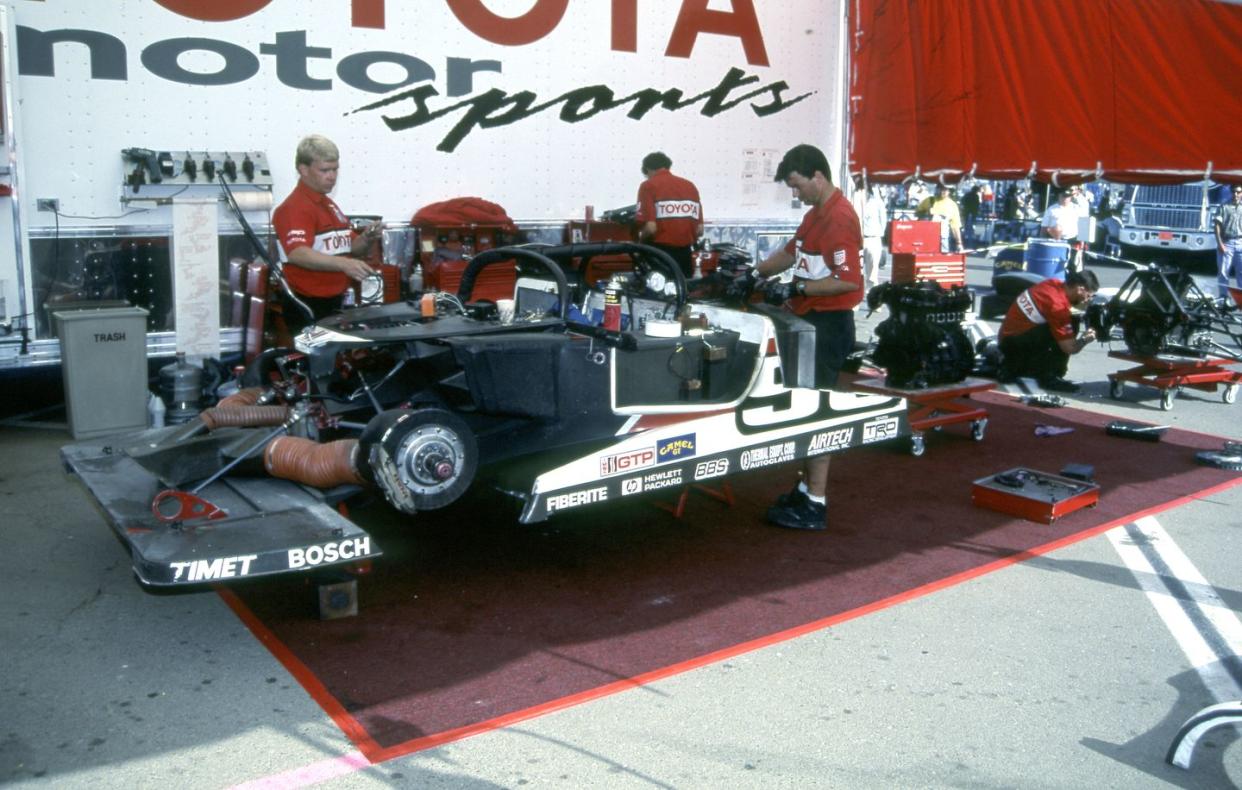
Ward: We were able to make enough front downforce to match the rear downforce. That’s why this thing was fast. The other cars were boxed in and filled the fenders behind the tires more traditionally. We ended up with huge downforce.
AAR exploited this power and sublime handling—a byproduct of 10,000 pounds of supremely balanced downforce—to place a stranglehold on GTP. In months, the Mk III made its rivals obsolete, including TWR’s Jaguar XJR-16.
TWR counterpunched, sending the XJR-14 that blitzed the World Endurance Championship for an American reckoning with the Eagle.
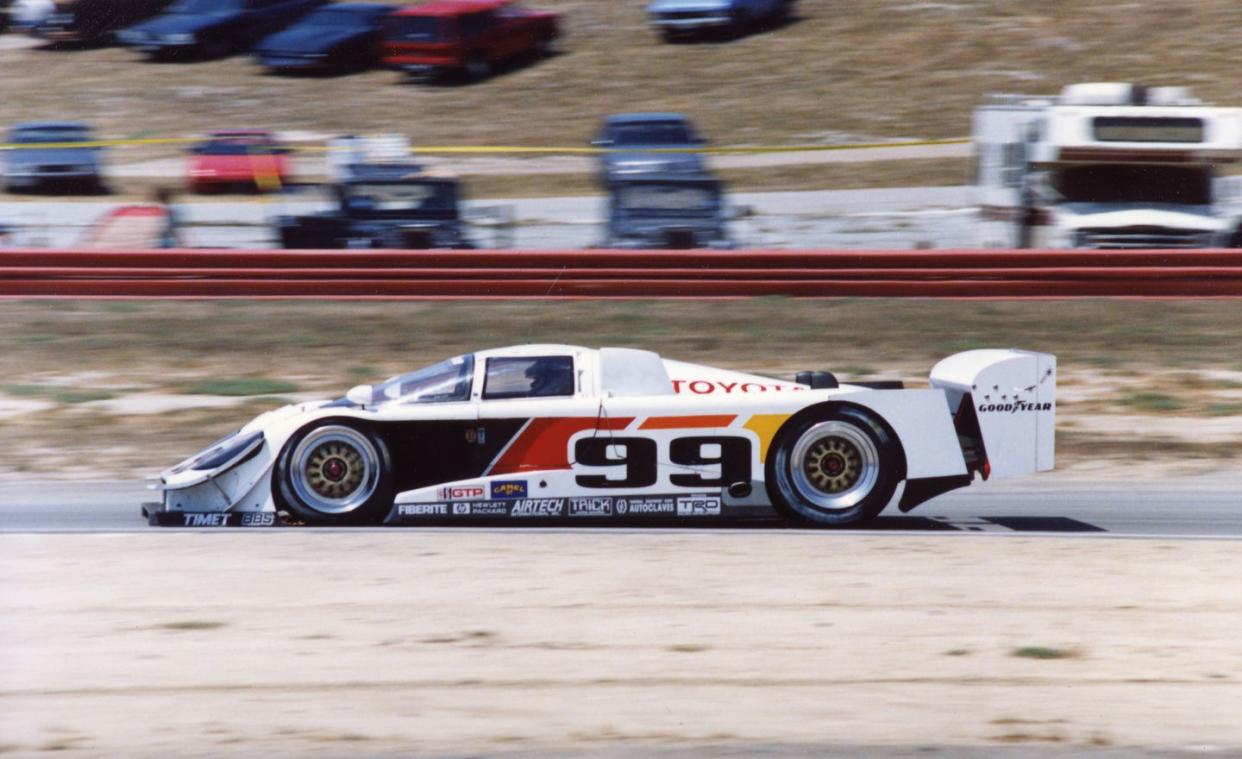
Riley: When Jaguar showed up with the F1-engined XJR-14, things started to unravel.
Ross Brawn’s wild creation was a testament to lightweight construction, with plunging bodywork led by a unique front wing element and an F1 800-hp 3.5-liter V-8 engine. The XJR-14 has been aptly described as an “F1 car with fenders.”
David Brabham: In 1990, I was driving in Formula 1 for Brabham, and we were at the back of the grid. We didn’t have the downforce of the top teams. The first time I jumped into the XJR-14, I couldn’t believe how much grip it had. It was seconds quicker than everyone else.
Davy Jones: We shared engines with Benetton F1 that year. The only difference between Michael Schumacher’s engines and mine was that theirs read “Cosworth” and ours read “Jaguar.” That was cool.
Tony Dowe, TWR team manager: That was probably the craziest GTP car ever. Something to be driven on knife edge with no power steering.
David Brabham: We had up to 10,000 pounds of downforce on that car, and we’d run times that would put us in the top 10 on the F1 grid.
Davy Jones: At Mid-Ohio, we went from the XJR-16 to the XJR-14. We lost 8 or 10 mph in a straight line, but we gained 15 mph in Turn 1.
After dominating the World Endurance Championship, the nimble Jag—100 pounds lighter with equal power and downforce—was expected to eviscerate Gurney’s challenger.
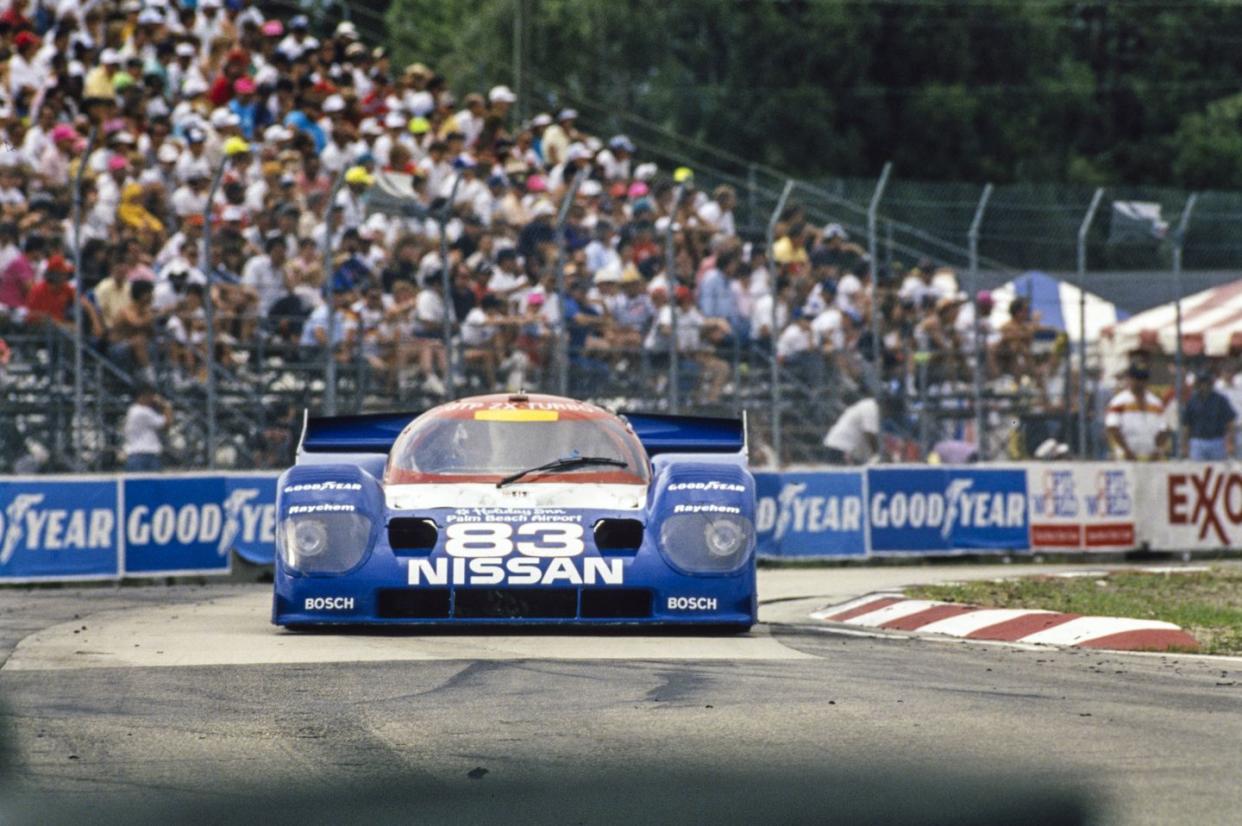
David Brabham: Smashing the throttle off the corner, the thing just stuck, and off it went. I never recall having oversteer. You could ram it into the corner, and the only thing that would give up would be the front.
What the XJR-14 lacked was the Eagle Mk III’s transformative downforce solution. And that made all the difference. Ward’s AAR drivers attacked corners with ferocity, while the Jaguar pilots lost fractions of time managing understeer. The Mk III snatched seven pole positions to the XJR-14’s five and dominated the win column with a final tally of 9–2. The Mk III’s first championship was clinched easily.
After winning four consecutive championships through 1991, Nissan managed just one win after the Mk III’s introduction. The Intrepid? None. Conquering the Eagle would require astronomical manufacturer investment with no guarantee of success. Like Chevy and Nissan, Jaguar exited GTP after 1992.
By season’s end, IMSA had set in motion some changes following a series of warning signs, starting with Kendall’s vicious 1991 crash.
Kendall: I don’t blame the car. That era was like the space program. You’re doing stuff that’s pushing the envelope with the forces in a huge way.
Raffauf: We had some big crashes at Road Atlanta with the two Nissans and the Toyota, all from tire failures going into the dip at over 200 mph. The tires just exploded because there was so much pressure with the G loading going downhill into a low spot at that velocity.
Kendall: I drove through those wrecks right after they happened. It was terrifying.
Raffauf: Allegedly, Goodyear told them after the race that until they came clean with how much downforce the cars actually made, they weren’t getting any more tires.
Davy Jones: We started breaking front wheels on the XJR-14 because there was just so much load. The first crash was at Lime Rock. The same thing happened at Road America going through the Carousel. They X-rayed them, and they were all cracked. We didn’t do any testing or running until we had new wheels.
Raffauf: Geoff Brabham crashed at Road America. It started at pit-out, and the car didn’t stop until Turn 1. It went end over end like seven times. It took them 40 minutes to extract him. If something went wrong, those cars could leave the earth quite easily.
Kendall: That’s what pulls not just racing but civilization forward. You don’t learn about what’s possible and what the weak points are unless you stress them to the point of failure. With aerodynamics, it was definitely a scary time.
Raffauf: The cars were spectacular because they were faster than the racetracks. But it was like, okay, we’re probably going a little too fast. That was the downforce.
It was also the power. IMSA intervened, slowing the cars by tightening engine outputs.
AAR ran the 1993 season as GTP’s sole remaining factory team. The Eagle Mk III won every race but one and retired with a 74 percent win rate. Of the 27 races it entered, it won 20, including 16 of its last 17, the 24 Hours of Daytona, and the 12 Hours of Sebring.
And it killed the class.
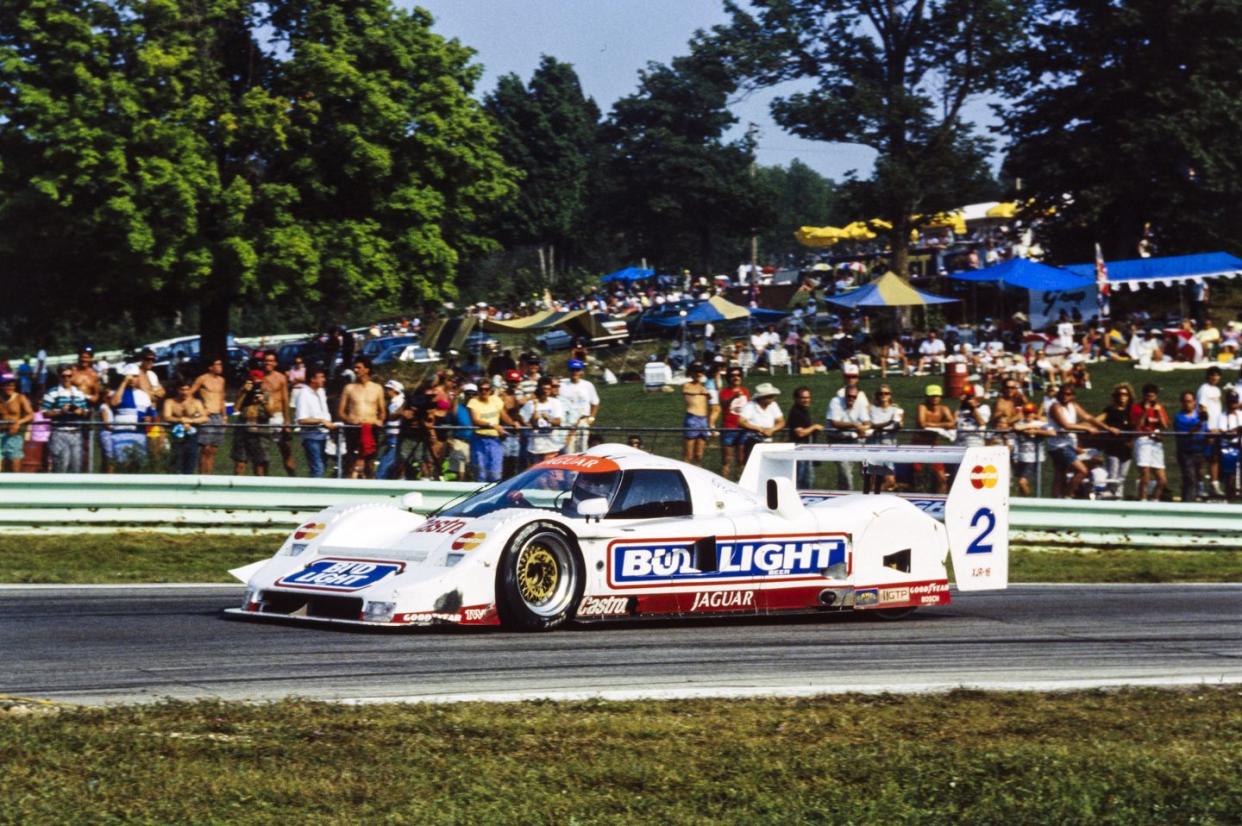
Ward: The series died after the Mk III. It was over.
IMSA scrapped GTP for 1994. The cars that made IMSA more popular than NASCAR and challenged IndyCar for road-course supremacy were replaced with the new World Sports Car formula. The lower tech, lower downforce, and lower speeds were heartbreaking. WSC’s first pole at Lime Rock was 7.396 seconds slower than PJ Jones’s 1993 record that, to the delight of AAR, remains unbeaten.
Ward: I think we were just superior to anything in existence or anything that came afterward.
Underwhelmed by WSC, crowds shrank, and American sports-car racing declined. Only the recent GTP revival—now with hybrid engines—has IMSA rediscovering some of its former magic. Still, with around 4500 pounds of downforce, the 21st-century GTPs are no match for their ancestors.
In 2022, when F1 went apeshit with aero, its cars shot to 49 kilonewtons of downforce—approximately 11,000 pounds of downforce at 200 mph, according to an F1 engineer. Finally, another racing series eclipsed IMSA’s downforce kings.
It only took 30 years and hundreds of millions of dollars in aerodynamic development to steal GTP’s crown.

A car-lover’s community for ultimate access & unrivaled experiences.JOIN NOW Hearst Owned
You Might Also Like
